
HartRAO Home >
news >
Last New Surface Panel Installed 2003/09/10
Radio Telescope Upgrade
Last New Surface Panel Installed 2003/09/10
The last of the 252 new panels making up the main parabolic surface of the
26-m radio telescope was installed on 2003 September 10.
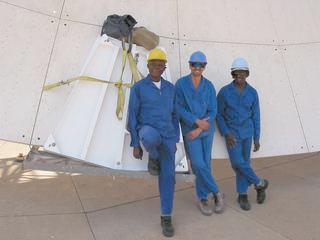
Click on image for large version
Simon Morake, Jacques Grobler and Andrew Masiteng pose with the last panels
that they have made, which are tied onto the telescope step for the journey
upwards for installation.
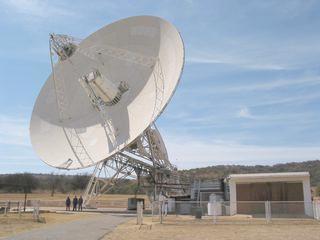
Click on image for large version
The panels begin their journey upwards, leaving the three figures in the
shadow of the dish.

Click on image for large version
Onlookers arrive in the gap where the old hatch used to be, as the panel
with the new hatch is installed alongside.

Click on image for large version
Venus emerges from the deep? No, its Jonathan Quick, come to watch the
last panel go in. Ludwig Combrinck is on the left, Director Justin Jonas on
the right.
Simon and Andrew wait to position the last panel.

Click on image for large version
Simon and Andrew lower the last panel into place. Justin wonders - "Will
they drop it?".

Click on image for large version
Testing the new trapdoor.
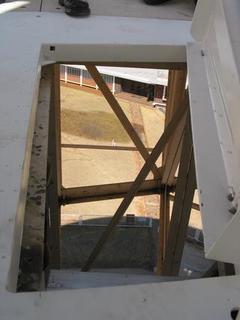
Click on image for large version
Looking down through the new trapdoor at the ground about 25 metres (80')
below.
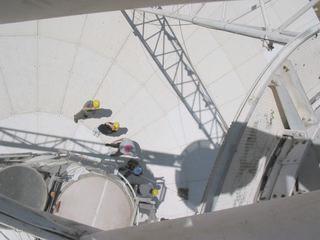
Click on image for large version
The new surface seen from the mounting of the hyperbola subreflector, part
of which is visible on the right. The two circles on the lower left are the
top of the feed horn for the 18 cm wavelength receiver (left), and the top
of the Cassegrain cone (right) that houses the other receivers.

Click on image for large version
The collected workers (in blue) and admirers (the rest) watch as Attie van
Wyk demonstrates that the new trapdoor works.
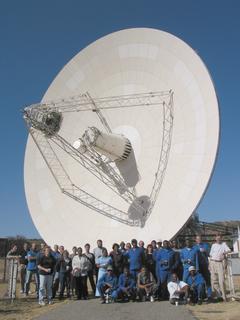
Click on image for large version
The Director "launches" the newly resurfaced telescope with champagne and
the assembled staff gather to celebrate. Courtesy of a delay timer on the
camera, the photographer is also in the picture, after a rapid sprint.
The next step is the alignment of the surface panels. This will
initially be done with theodolite and tape to perform the basic alignment
with the telescope structure. Then we change to microwave holography,
making use of a 12 GHz transmitter on a geostationary satellite as a
reference signal.











